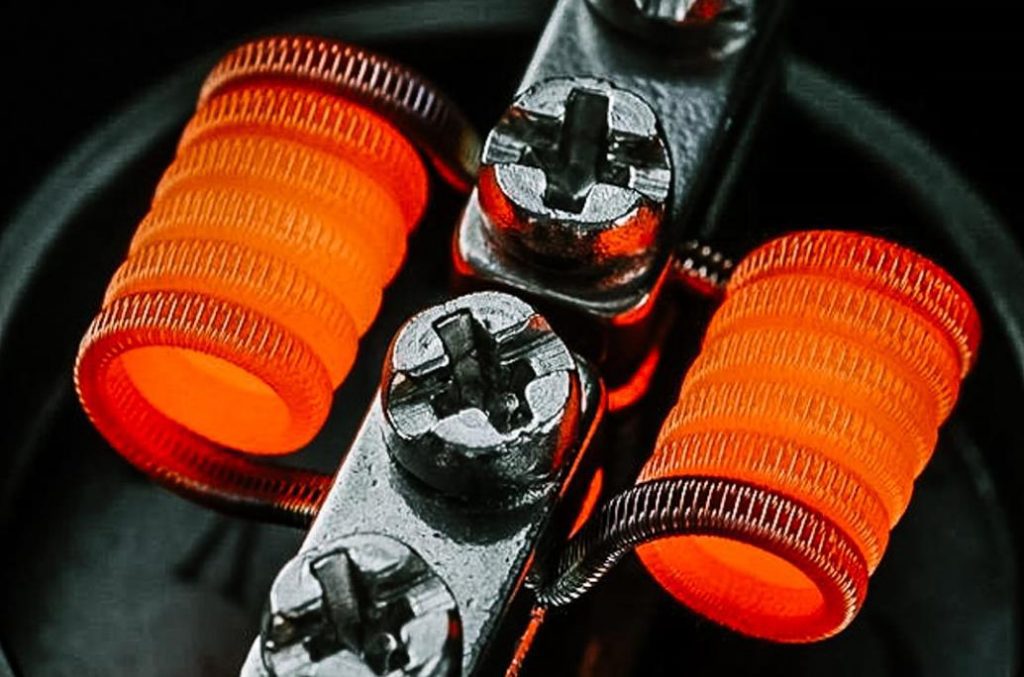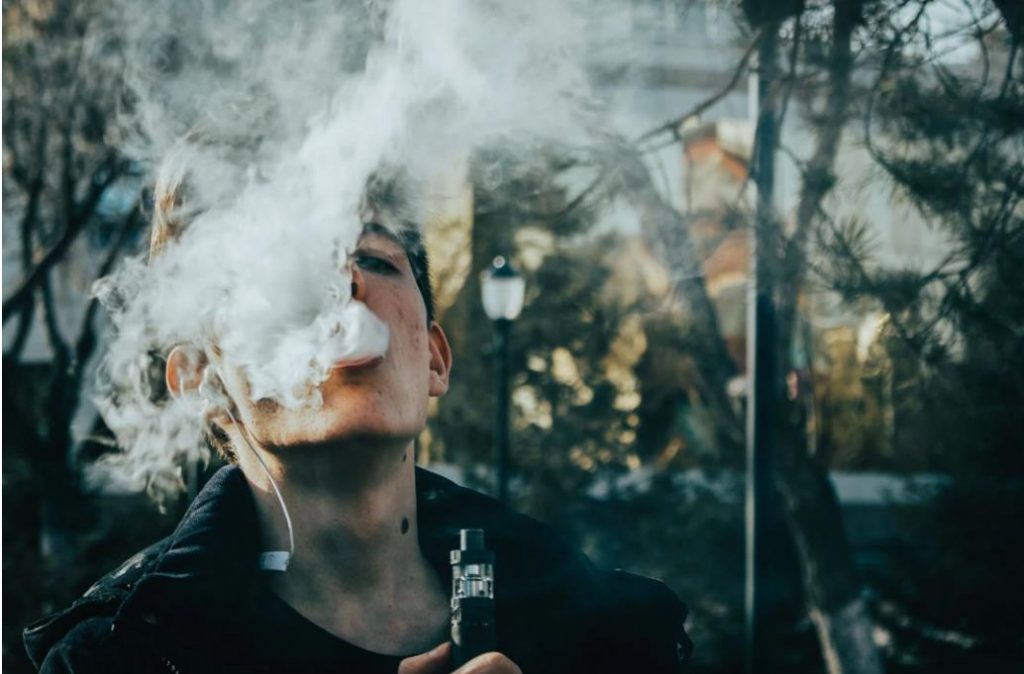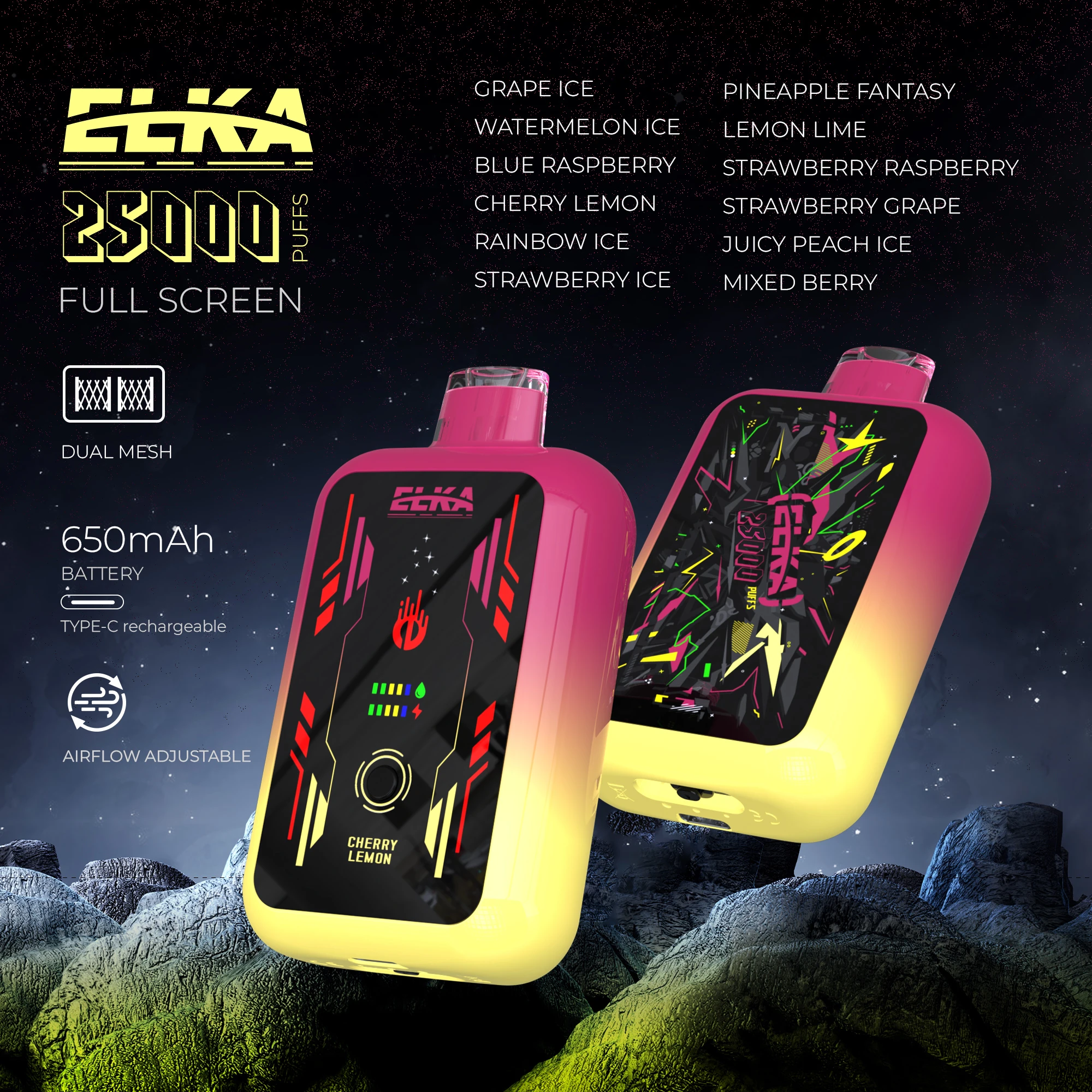If you’ve ever fired up your device and taken a nice, long drag, only to end up gasping and choking on a hot, foul-tasting hit, you aren’t alone. Burnt hits are nasty, unhealthy, and best avoided at all costs. Keep reading to find out:
- What’s gone wrong?
- Why does my vape taste burnt?
- And how do I fix it?
- Burnt hits vs. dry hits
Before we get into the mechanisms behind burnt hits, an important distinction needs to be made. As well as burnt hits, most vapers will have experienced dry hits. The terms are often used interchangeably but are actually very different phenomena. So what’s the deal with dry vs burnt hits?
To understand dry hits, we need to look at the inner workings of your vape device.
How do e-cigarettes work?
Unless you use a particularly exotic device, such as an ultrasonic vape, most e-cigarettes share a similar design and mechanism of action. The most basic mechanical devices are just a tube to hold a battery and a tank that sits on top. The tank consists of a coil of wire wrapped in some kind of wicking material (usually cotton) and space for the e-liquid to reside. The coil and cotton together are also known as an atomizer. The user activates a button that sends current from the battery to the coil, heating it up – the heat then transfers to the cotton, which is saturated in e-liquid. When e-liquid heats up, it turns into vapor (technically an aerosol) for the user to inhale.
What is a dry hit?
A dry hit occurs when your wick starts to dry out, and there is insufficient juice in contact with your wire coil to produce the proper amount of vapor. Dry hits have less flavor and vapor production than regular hits. It might taste bad or irritate your throat too, due to there being a hit of hot, dry air mixed in with your vape. Dry hits aren’t too unpleasant, but you should treat them as a warning sign that you might be on the way to burning your coil.
What about burnt hits?
If you’ve ever experienced a burnt hit, you probably won’t need to have it described to you. For those souls fortunate (or careful!) enough to have avoided burnt hits entirely, it goes something like this: You fire up your device, expecting a smooth, satisfying hit of flavored nicotine, but are instead left with a lungful of choking pain and a nasty, burnt taste in your mouth. Sound familiar?


What causes a burnt hit?
Burnt hits happen when not enough juice reaches your coil, and the dry cotton wick begins to burn from the heat of the coil. The result is a lungful of acrid, nasty smoke, which I’m sure can’t be good for your health. But what are the underlying causes of burnt hits?
Running out of Juice
The most common cause of burnt hits is simply not having sufficient juice in your tank (or on the wick, if using a dripper) to keep your coil soaked. The tank need not be entirely empty for this to occur.
Wattage too high
Pushing your vaping device beyond its wattage limits is a quick-fire way to burn your coils. Exceeding the manufacturer’s stated wattage leads to juice being cooked off the coil faster than the tank can resupply it. This can easily lead to combustion of the cotton and nasty, burnt tasting hits.
Taking too many hits
Vaping too many hits in a row, also known as “chain vaping,” can quickly dry up your coils and lead to burning.
Vaping High VG e-liquid
Propylene glycol (PG) and vegetable glycerin (VG) are the two ingredients used as the base for all e-liquids. They each have different qualities and uses, and different vapers prefer different ratios of VG to PG in their juice. PG is better at transporting flavors than VG, but provides smaller clouds, and a harsher throat hit. Sub-ohm users typically prefer higher VG juices.
Also, VG is considerably thicker than PG. If you run high VG juices in devices not designed for sub-ohm vaping, you run the risk of burnt hits. This is because VG is too viscous to resupply the coils in vapes not designed for it.
Not priming your coils properly
Before you can use your vape, you have to let the e-liquid thoroughly saturate the cotton around your coils. Vaping too soon after changing your coil is probably the most common cause of burnt hits. The risk is especially high with new coils as they come packaged bone dry. Priming your coil ensures that your wick is full of juice before you start vaping. Priming is the best way for most users to avoid burnt hits.
How do I tell if my coil is burnt?
If you get a burnt hit, it will be evident from the coughing, spluttering and nasty taste left in your mouth. However, all coils will eventually deteriorate to the point where the cotton is burnt. At this point, it is time to throw it out and put a new one in your device. The first sign that your coil is past its prime is a degradation in the overall vapor quality and flavor. You may also notice a reduction in the volume of vapor your device produces.
If you are unsure whether your coil is burnt, one of the best ways to confirm is to give a visual inspection. Open up your device and take a look at your coil. If you notice any blackness or charring (a little discoloration of the wick is normal), it’s probably time to throw it in the trash.
What’s the best way to prevent burnt hits?
The best way to avoid getting burnt hits is to always prime new coils correctly before you fire them up. Priming a coil involves making sure your coil and wick are entirely saturated with e-liquid before firing the atomizer. How you prime your coil depends on what type of device you have.
Priming tank-based coils
Almost all replaceable coils for tank-style vapes have the same priming process.
- Remove your coil from the foil packaging
- Drip a small amount of juice directly onto the wick, through the wicking holes
- Assemble the tank
- Fill with your e-liquid of juice
- Close the tank and leave for 10 minutes
If you have a device with variable wattage selection, it’s a good idea to start slightly below the minimum recommended temperature and work upwards. If you leave a good 30 seconds between hits, you will allow the juice to saturate the wick thoroughly.
It’s common for new coils to spit a little bit at first, as excess juice may have gathered inside the coil itself. If this persists, experiment with cranking up the wattage on your device a little. Always stay within the recommended operating wattages to avoid burning your coil!
Priming vape pods
If you use refillable pods, the priming method is even easier than with tank-style mods. As the coil is not removable, you have to prime the whole pod. Here’s how to go about it.
- Fill your vape pod with your choice of juice
- Set the pod aside for a minimum of ten minutes
- Take a few drags from the pod itself without the battery attached. This draws additional juice through the pod and into the coil, protecting against dry or burnt hits
- After ten minutes, fire up your device and take small, spaced out hits
Sometimes the coils inside vape pods need a little bit of “burning in” before they function optimally. Keeping your initial hits short and small can help speed this process along without taxing your coil too much.

Other ways to avoid burnt hits
If priming your coils isn’t the problem, you may need to look at your vaping habits. Leaving enough time between hits, not vaping at too high a wattage, and using the correct VG to PG ratio for your device are best practices for avoiding dry hits. If you have followed this advice and are still experiencing dry hits, there may be something wrong with your coil or device, or it may have just reached the end of its lifespan.
How often should I change coils?
In general, you should change your coils as soon as you notice a degradation in flavor, vape quantity, or the visual condition of your cotton wick. Usually, this takes between 1 to 4 weeks.
How long your coils last will depend on any number of factors. Some of these include how much you vape, the kind of flavors you enjoy (some brands and flavors known as “coil killers,” are notorious for shortening the lifespan of coils), and the wattage that you vape at.
Another factor that can influence how often you need to change your coils is whether you vape “mouth to lung” (MTL) or “direct to lung” (DTL).
MTL vs. DTL
MTL and DTL vaping differ in several important ways when it comes to coil longevity. In MTL vaping, the vapor is pulled into your mouth before you inhale additional air to draw it into your lungs. In DTL vaping, you bring the vapor directly from the coil into your lungs in a single breath.
MTL vaping tends to use much higher nicotine strengths than DTL, and when combined with the more restricted airflow, gives an experience that is closer to smoking a cigarette. DTL vaping provides a more intense vape with more significant clouds and a smoother hit.
DTL vaping uses sub-ohm coils that require a lot of juice to make those big clouds. Compared to sub-ohm coils, those designed for MTL vaping tend to last considerably longer. This increase in longevity is because much less juice flows over the coils, and they run at lower wattages.
Not all e-liquids are created equal
Some e-liquids will kill your coils a lot faster than others. VG is well known for leaving more of a residue than PG. People vaping juice with a high VG content will burn through their coils faster than others.
There is a correlation between the color of your e-liquid and how quickly it will cause a build-up on your coil, which leads to burnt hits. Generally, the darker an e-liquid is, the more residue it will leave behind. Additionally, many vapers notice that the more sweetener a particular juice has, the faster it will kill their coils.
If you want to get the most longevity out of your coils, you should vape light-colored, fruity flavored juices with low VG content.
Not all coils are created equal
A guaranteed way to fry your coils to a bitter, nasty tasting crisp, is to run them above the recommended wattage supplied by the manufacturer. That being said, different manufacturers all have very different approaches to the way they engineer their coils. There is a vast degree of variation in longevity between different brands of coil. Even within brands, different models can have drastically different lifespans. It will pay dividends to do your research before you commit to buy.
A quick search around the numerous vaping forums on the internet can give you a good idea of what you are buying before you throw down hard cash.
What if my new coil tastes burnt?
If you’ve primed your coil correctly but it tastes burnt when you use it, you might have a dud. The manufacturing of disposable products like coils is done in enormous quantities. This large scale processing means that, unfortunately, there will always be a few defective units that make it through quality control. The good news is that manufacturing standards within the leading vape companies are far superior to what they were even just a few years ago.
Main Takeaways
Burnt hits are the last thing anyone wants. To avoid choking on burnt cotton smoke, follow these simple steps
- Always prime your coils properly
- Try not to chain vape! An extra 10 seconds between puffs can save you a world of pain
- Stay within the manufacturer’s recommended wattages
- If you get dry hits, stop! Assess the situation, and see how you can remedy it
Stay burnt hit free, fellow vapers!






